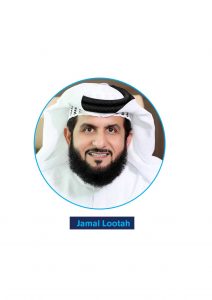Where does the industry stand when it comes to the adoption of smart technologies in facilities management (FM)? Given the reported tangible and intangible benefits of digital solutions, what are the main bottlenecks that building owners face when it comes to investing in smart FM, and how can the industry overcome them to improve energy efficiency and IEQ? Hannah Jo Uy has the story…
There is a consensus in the construction sector on the need to improve building performance, in view of global sustainability targets. And, of late, smart products and solutions have been touted as key to achieving this. Technology has been changing the face of facilities management (FM) for many years now, but the Internet of Things (IoT) has given the industry a significant leap forward, says Andrew Law, Technical Services Director, Tafawuq Facilities Management.
Law presents Building Management System (BMS) as another example, pointing out that though BMS has been used to control the heating, ventilation and air conditioning (HVAC) outputs of buildings for decades, recent advancements allow companies to deploy algorithm-driven IoT devices to learn a building’s requirements and predict temperature changes throughout the year to achieve significant utility savings.

The growing importance and value of big data is seconded by Rohan Chandavarkar, Associate – Data Management, AESG, who estimates that approximately 95% of data captured in the construction and engineering industries remains unused. The paper-based project workflows prevalent in most firms, he says, is due to the inability to successfully manage and process the vast amounts of data captured from various sources on every project. “By successfully capturing and utilising Big Data through the use of a cloud-based digital platform, organisations can track asset data throughout the project lifecycle, provide accurate and real-time data reporting and benefit from prediction-based insights,” he says.
Chandavarkar adds there is a range of proprietary sensors and IoT devices available in the market that can readily transmit data to the cloud. “With seamless integration of data gathered by IoT, buildings and cities can be managed and efficiently optimised,” he says. Evidently, the market reflects this view, as 95% of construction companies surveyed by KPMG said they believe emerging technologies, including IoT, will fundamentally change their industry, while a further 72% say new tech adoption, including IoT implementation, is part of their strategic plan or vision. “PwC also reports that 98% of industrial companies expect to increase efficiency by as much as 12% with digital technologies like IoT-enabled predictive maintenance or AR,” he says. “Construction is ripe for transformation using digital tech, and companies that don’t stay ahead of the curve could risk being left behind.”
PASSING THE BENEFITS FOR ALL PARTIES
Largely speaking, the solutions are considered advantageous for all stakeholders. Chandavarkar believes that building owners will greatly benefit from taking the digital route, as the data insights they gain about their processes will help them improve overall productivity. Similarly, he says, FM companies that adhere to a digital approach are able to allow validated construction and asset data to be seamlessly transferred to their systems, which saves time, cost and effort and reduces the possibility of errors arising out of re-inputting data manually.

For Sanjeevv Bhatia, CEO, Netix Global BV, a real-time and granular view of business operations, including asset performance, customer preferences, and resource and energy consumption, enables management based on specific intelligence for all parties. “Smart systems allow every aspect of the business to be optimised, from physical assets and automation to workforce productivity and more,” he says. “In fact, the USP of this approach is the ability to operate at peak efficiency, while reducing operational overheads and increasing asset lifecycles, at the same time.” Prabhu Ramachandran, Founder and CEO, Facilio, says it is important to understand the tangible and intangible benefits that such solutions offer. The tangible advantages, he says, are directly related to cost savings, from enhanced efficiencies in system performance and energy consumption. “Predictive and condition-based maintenance has been known to deliver about 20-30% savings in maintenance cost, the capacity to achieve uptime SLAs, and energy savings,” he adds. Markus Oberlin, CEO, Farnek, points out that this is especially true in the case of HVAC systems, which constitute the main source of energy consumption in the region and, therefore, are responsible for the vast proportion of a facility’s operating costs. Further elaborating on the multifaceted ROI that can be achieved from predictive maintenance, Bhatia says: “In terms of operational improvements, we have seen mean asset lifecycle go up by around 30%, often more. Unexpected failures are reduced by at least 55-60%. But, the priceless intangibles are the increased system-wide robustness and the ability to deliver personalised and disruption-free tenant experiences, which have a significant impact on brand value and occupancy rates.”

Ramachandran adds that connected buildings and systems also free portfolio O&M teams from having to operate in silos and to manage data, allowing them to focus their efforts on creating wholesome real-time experiences for end customers. “In terms of value, this translates into greater flexibility, more agile operations and a sustainable model for smart building innovation,” he says. Bhatia says this is especially crucial with the rise of a connected customer base. “Millennial and Gen Z customers are accustomed to highly personalised services, responsive services and user experiences,” he says. “And the majority are prepared to pay more for this. One of the greatest strengths of smart systems is the ability to deliver such service experiences, consistently. In a highly competitive marketplace, this translates into one of the largest demographic segments preferentially seeking out properties that can deliver this.” Bhatia says smart solutions also have a positive impact on maintaining better quality IEQ. “In fact, this was one of the major advantages that building owners with state-of-the-art smart systems were able to unlock during the pandemic, keeping in mind the airborne vector of the spread of the contagion,” he says. “Sensors and field devices are able to capture real time IEQ parameters in great detail, allowing building owners to monitor and optimise air quality continuously.” He adds that in conjunction with similar insights into the performance of HVAC assets, building owners are able to stay several steps ahead of their IEQ goals.
AN ADDED INCENTIVE
Better controls in relation to air quality is just one of the ways that COVID-19 became an unexpected driver towards smart FM solutions. Bhatia says that according to pre-COVID-19 estimates, the market size of smart building management systems was set to exceed USD 19 billion by 2023. He believes the growth will be even more dramatic, given the challenges that Commercial Real Estate (CRE) owners faced during the pandemic and the advantages that buildings with smart systems were able to leverage through the crisis. This is certainly the case for Jamal Lootah, CEO, Imdaad, who says the pandemic has accelerated demand for technological solutions that minimise costs while improving the quality of service. “We have witnessed this shift across all of the sectors we serve,” he says. “Building Management Systems, for instance, harness the power of IoT, AI and data analysis to proactively monitor our clients’ assets in real-time. These advanced systems can detect faults before they arise, saving on maintenance costs and reducing downtime. According to data gathered over a month-long period, we were able to remotely fix over 90% of faults through our BMS without human intervention. This also helps facilitate social distancing.”

For Law, the most significant change he noticed during COVID-19 is the increased emphasis on the cleaning operation within the FM tenders. “Historically, the mechanical, electrical and plumbing (MEP) provisions have been our clients’ predominant focus,” he says. “However, cleaning, including sanitisation and disinfection, now has a much higher profile. The industry has advanced with improvements in cleaning and sanitisation products since the start of the pandemic. This resulted in a reduced amount of cleaning required at high contact points such as door handles, elevator buttons and many more.”
Oberlin says that in his experience, the requirements following COVID-19 are mixed, depending on the facility’s function. “At the height of the lockdown, most commercial premises had reduced occupancy, leading to less HVAC load requirements, varied due to seasonality; but at the same time, the HVAC load in residential premises increased due to higher day time occupancy,” he says. “In general, the HVAC requirements for commercial facilities are unlikely to change significantly due to reduced occupancy, particularly in summertime; hence, technician staffing and maintenance intervention levels will likely remain the same.”
WHAT’S HOLDING THE INDUSTRY BACK?
Though the benefits are clear and the momentum remains positive, the level of adoption of digital across buildings still varies. Oberlin is optimistic that growing awareness in the industry will lead to more integration of Internet of Things (IoT) especially in ongoing projects that are still in the design stages. However, Oberlin says that while there has been a noticeable advance in the range and availability of smart systems for the local and remote control of domestic air conditioning systems, there has been, to date, little impact on maintenance operations. “Recently completed towers and commercial facilities, where we perform FM services on the whole, have not yet advanced at the same pace as residential properties,” he says.
The bottlenecks are due to a number of reasons, one of which is cost. “Clearly, in these difficult times, the availability of funds for major capex projects, such as the integration of smart HVAC systems, must be extremely challenging,” he says. “Across the region, rental levels have reduced considerably, which ultimately impacts the funds that owners of residential buildings can budget for capex projects. For commercial and mixed-use building owners, the same pressures are likely to exist due to the impact caused by the pandemic on their revenue and profit targets.” Bhatia says that while costs vary, depending on building floor layout and the existing automation already embedded in them, the ability to retrofit a digital solution, rather than replace existing assets with an additional physical layer, is significant, and is easily offset by gains in efficiency.

Another issue is the building’s capacity to support the use of the systems. Law points out that as much as technology changes and improves the FM industry, it is limited to how ‘smart’ buildings are when integrating such services. “We operate on technological platforms, so we are very capable of delivering technology-based approaches on a case-by-case basis,” he says. “However, some building owners and developers are still not utilising FM providers at the building design stage. Neglecting this crucial element takes away so much value that can be built-in, especially when retrofitting a building at a later date can come at a higher cost.” Pointing out another bottleneck, Chandavarkar says the primary challenge for integrating data depends on how explicitly the data fields are specified in a project. “The process of integration depends on the inputs required by the FM team – hence, it is important that the FM team is involved with the handover process from the very beginning, so that the asset data templates can be set up in accordance with the project requirements,” he says, “Once this is done, the validated and approved data within these templates can be seamlessly exported into various FM software.”
Ramachandran says these are all symptoms of a disjointed approach. “Building operations are bogged down by the issue of silos in O&M, which are amplified further in the case of a portfolio,” he says. “System silos, building silos and functional silos increase the barriers to innovation and unifying data. Real estate owners and operators are now exploring a platform-powered approach, which harnesses IoT- and cloud-based connectivity to integrate systems and optimise performance, flexibly and scalably.”
Bhatia also highlights the importance of better collaboration, pointing out that the CRE industry already has to reconcile multiple vendors having specific protocols and solutions. “HVAC systems, including split, VRF and VRV units, can be particularly challenging to integrate into legacy building portfolios,” he says. “This is where the next generation of unified, single-pane of glass, iIBMS solutions are critical to creating seamless portfolio scale integration. No matter the asset, IoT networks gather real-time performance data, and AI-analytics generates task- and outcome-specific insights. Such smart systems, identifying anomalies in performance well before failure, enable predictive, targeted and optimal
maintenance.”

Ramachandran says building owners and operators are trying several possible approaches to optimise performance through remote management. However, such solutions, either directly or indirectly, add to the complexity of system and data silos. This invariably overshadows the benefits of a connected model of system operations. “Compared to other approaches, the potential benefits of a platform-powered approach, with a suite of cloud-based O&M applications, are rather practical and high-impact,” he says. “In a centralised platform approach, there is a reduction in costs and complexity, because the potential problem of overlayed silos is avoided.” He says that modular apps allow owners to invest in exactly the capabilities that they need, and the flexibility of a cloud-based solution guides owners in their digitisation journey, based on the stage and maturity of their portfolio.
SKILLED HUMAN RESOURCES
However, the tools are only as good as the people using them. Law says human capacity development is another key to success for Eltizam’s technology improvements. “The people at the front end of our FM business are also involved in the development stage of systems and processes to ensure they are fully knowledgeable about our projects,” he says. Speaking for Farnek, Oberlin says the company is implementing use of technology from management down to technician level to deliver and support operations. However, Oberlin is quick to point out that while technology offers great assistance, it does not replace the need for “hands on” training in the performance of routine maintenance tasks and, more importantly, in being able to trace and diagnose faults. “Within our training
centre, we employ a number of typical HVAC assets as training aids to develop the HVAC technician’s skills sets,” he says. “Clearly, there is a cost issue regarding the scale of asset types that can be procured as training aids. Therefore, training on more costly assets, such as air-handling units and chillers, is conducted on live assets within our own facilities or as on-the-job training modules at live sites.”
Oberlin adds that striking a balance is crucial, because there are many older and recently constructed facilities without advanced BMS, which will not be upgraded to incorporate BMS+ or IoT. “Such facilities will remain operational for many years to come, hence there will always be a need for tactile + technology-based training,” he says. “However, as more and more facilities employ smarter and connected assets that are able to self-diagnose or are analytically monitored, it is fair to assess that the skill set of the technicians that maintain these assets could be reduced to the level of a ‘technical fitter’.” Oberlin says the fitter need not be a dedicated HVAC technician, but could be multiskilled and supported remotely by a dedicated HVAC specialist, who would oversee a wide range of fitters across the FM portfolio.
UNLOCKING THE BENEFITS
In any case, Chandavarkar believes that when it comes to new projects, collaboration is key and that FM companies that are engaged early on in a project’s lifecycle would be able to provide their operational requirements at the onset, which helps project teams to anticipate, understand and identify processes, resulting in a successful digital handover to the FM company. “Within the next few years, full-scale digitisation could lead to savings between USD 0.7 trillion and USD 1.2 trillion (13-21%) in the design & engineering and construction phases and between USD 0.3 trillion and USD 0.5 trillion (10-17%) in the operations phase.”
These significant savings, Chandavarkar says, would easily outweigh the preliminary costs. “By planning on the digital handover methodology for the project at the very onset, the benefits and savings that can be achieved are predicting and planning for maintenance requirements backed with data, use of validated data to create digital twins that can allow for live building data to be analysed in real-time,” he says. “This enables not just energy saving, system optimisation and reduction in operational costs but also extends the lifecycle of equipment. Real-time access to asset information and workflows also greatly speeds up the handover process, allowing for projects to be delivered on time.” It is only in so doing, he says, that building owners can use the data captured over a portfolio of projects for planning – and better planning means more accurate budget estimates and a better understanding of timelines and costs.
Copyright © 2006-2025 - CPI Industry. All rights reserved.